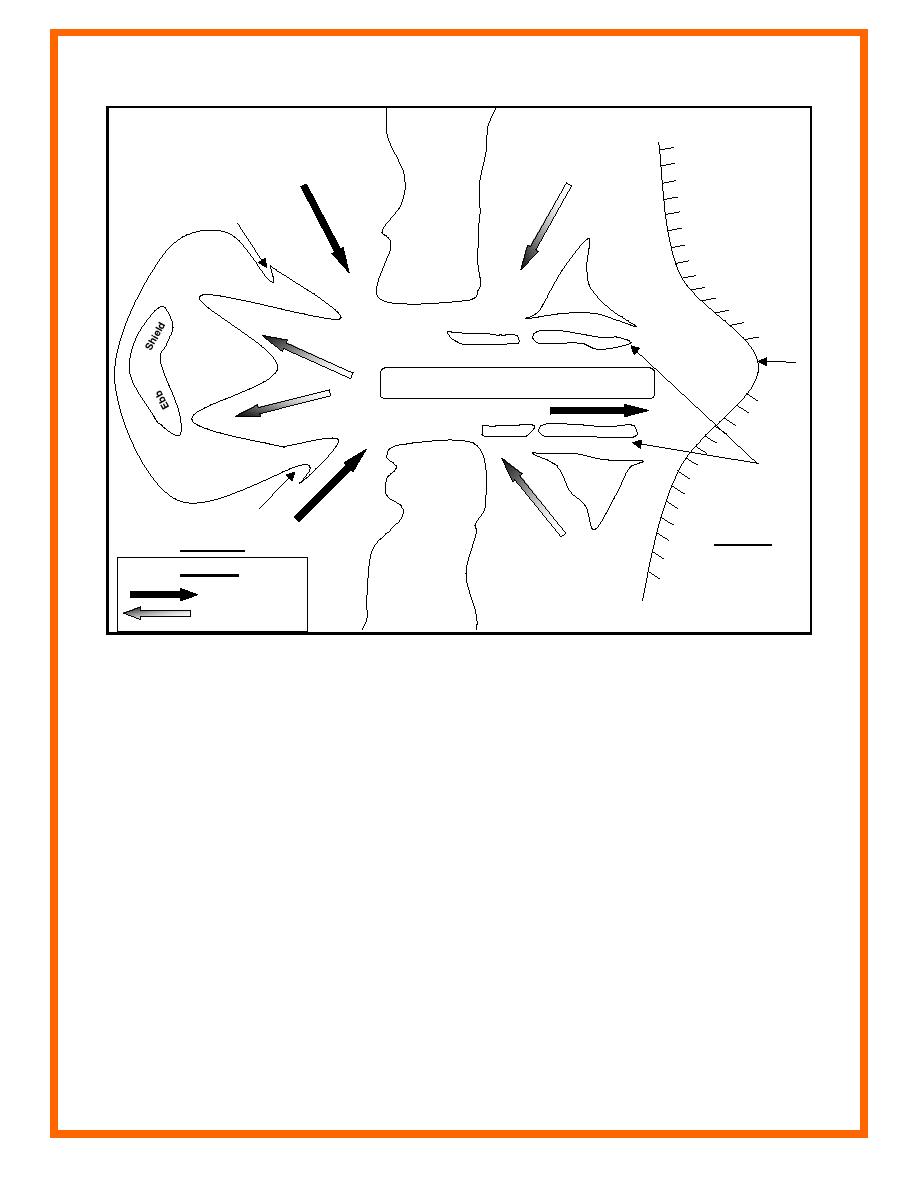
ERDC/CHL CETN-IV-29
September 2000
BAY
OCEAN
Marginal Flood
Channel
Spillover Lobe
Barrier
Island
Swash
Ebb
Bars
Spi
t
Flo
od
Cha
nne
l
Tidal Flat
Terminal
Flood Ramp
Throat
Main Ebb Channel
Lobe
nel
Chan
d
Floo
pit
bb S
E
Barrier
Swash
Channel Margin
Island
Bars
Linear Bars
Spillover Lobe
Ebb Shoal
Flood Shoal
Marginal Flood
Channel
LEGEND
Ebb Flow
Flood Flow
Figure 1. Typical inlet flow patterns and morphological features (Hayes 1975).
The described pattern of flood and ebb circulation is common, but every inlet has unique patterns
owing to the local situation. For example, the main ebb channel may be in the center of the inlet
or along one side. Factors that control the local circulation include inlet geometry, tide range,
bay-channel orientation, distribution of discharge through channels, wave climate, number and
configuration of jetties, and dredging activity.
FLOOD AND EBB DOMINANCE: Asymmetry of the tidal current means the average peak
flood or ebb current is stronger than its opposing current (flood stronger than ebb or ebb stronger
than flood). Tidal asymmetry is common in inlets. The asymmetry is called "flood dominant" if
the flood current is stronger than the ebb current, and "ebb dominant" if the ebb current is
stronger than the flood current. An example of an ebb-dominant current is shown in Figure 2.
Note that convention defines flood current as positive and ebb current as negative. Peak ebb
current is 1.15 m/s and peak flood current is 0.97 m/s. In an inlet and bay system in which no
tributary input or other significant nontidal forcing is present, the net discharge is zero through
the inlet, even though there is asymmetry in the tidal current.
2


 Previous Page
Previous Page
